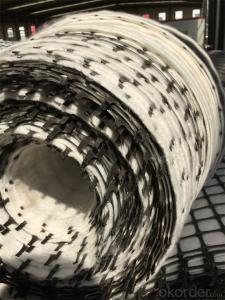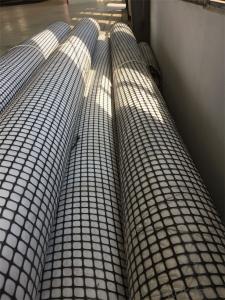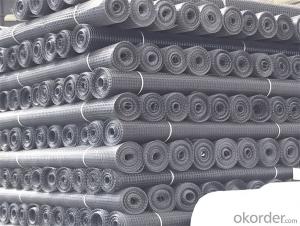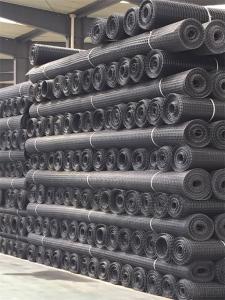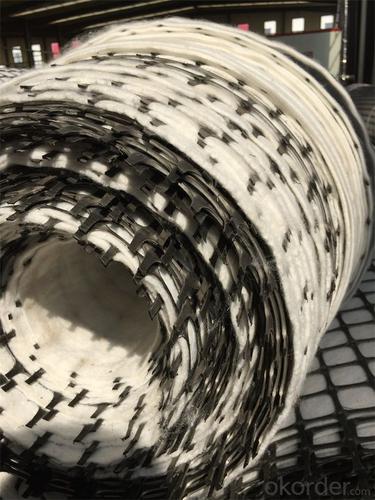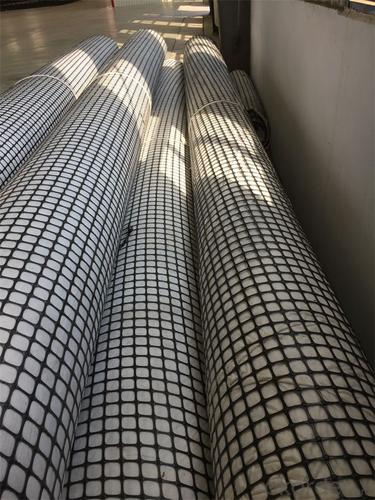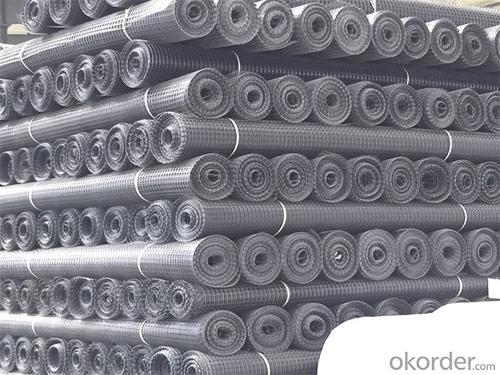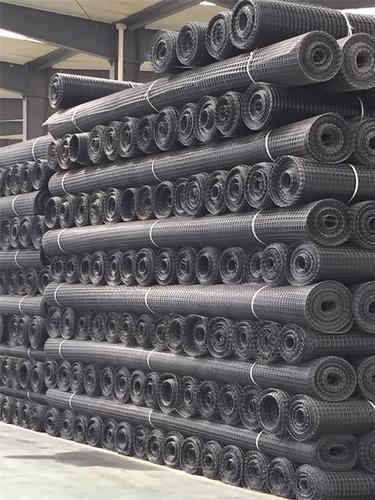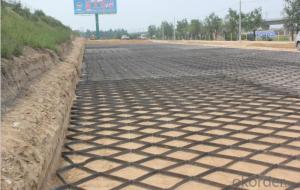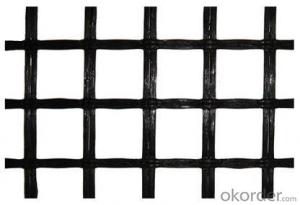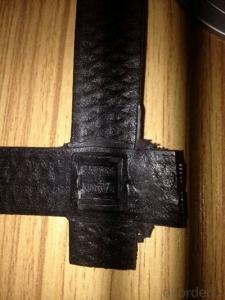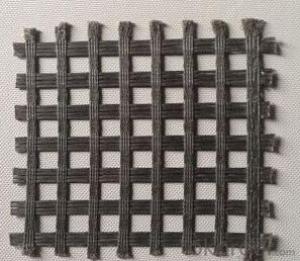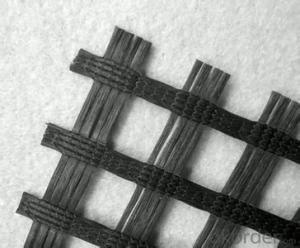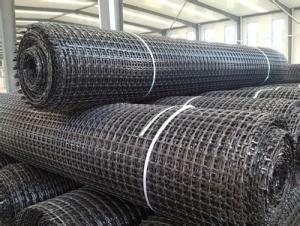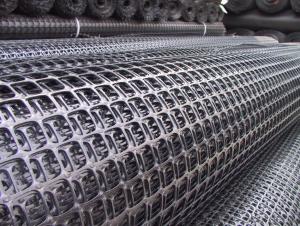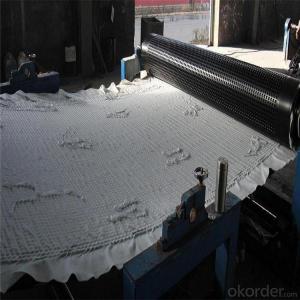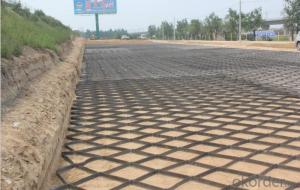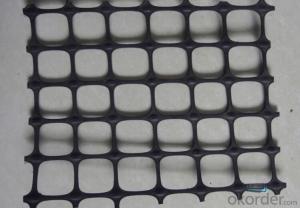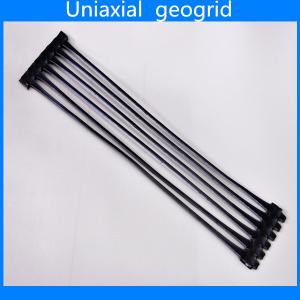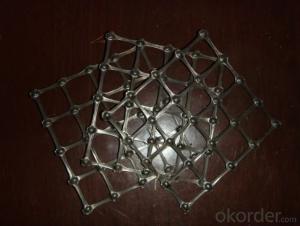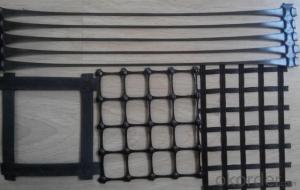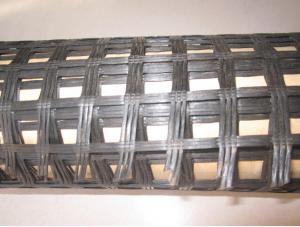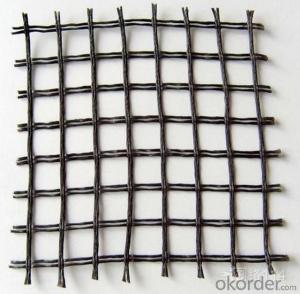Geogrids Fort McMurray Tensar Triax Geogrid for Soil Control High Strength
- Loading Port:
- Qingdao
- Payment Terms:
- TT OR LC
- Min Order Qty:
- 5000 m²
- Supply Capability:
- 2000000 m²/month
OKorder Service Pledge
OKorder Financial Service
You Might Also Like
Specifications of Geogrid:
High tensile strength at both longitudial and transerse direction
Improving bearing capacity of foundation
Preventing cracking and subsiding
Convenient to construct,reducing cost and maintaining expense
Applications of Geogrid:
Make reinforce treatment for various kinds of soft soil foundation to evenly distribute load stress and reduce uneven settlement, not easy to generate static electricity, and flammability property good in the coal mine. It is easy to wash coal.
Used in highway, railway, port, airport and municipal project. Support in the recovery working face of coal mine and roadway in the coal mine.
Index Properties | Test Method | Unit | GG1515 | GG2020 | GG3030 | GG4040 |
MD TD | MD TD | MD TD | MD TD | |||
Polymer | -- | -- | PP | PP | PP | PP |
Minimum Carbon Black | ASTM D 4218 | % | 2 | 2 | 2 | 2 |
Tensile Strength@ 2% Strain | ASTM D 6637 | Kn/m | 5 5 | 7 7 | 10.5 10.5 | 14 14 |
Tensile Strength@ 5% Strain | ASTM D 6637 | Kn/m | 7 7 | 14 14 | 21 21 | 28 28 |
Ultimate Tensile Strength | ASTM D 6637 | Kn/m | 15 15 | 20 20 | 30 30 | 40 40 |
Strain @ Ultimate Strength | ASTM D 6637 | % | 13 10 | 13 10 | 13 10 | 13 10 |
Structural Integrity | ||||||
Junction Efficiency | GRI GG2 | % | 93 | 93 | 93 | 93 |
Flexural Rigidity | ASTM D 1388 | Mg-cm | 700000 | 1000000 | 3500000 | 10000000 |
Aperture Stability | COE Method | mm-N/deg | 646 | 707 | 1432 | 2104 |
Dimensions | ||||||
Roll Width | -- | M | 3.95 | 3.95 | 3.95 | 3.95 |
Roll Length | -- | M | 50 | 50 | 50 | 50 |
Roll Weight | -- | Kg | 39 | 50 | 72 | 105 |
MD denotes Machine direction. TD denotes transverse direction. | ||||||
Property of Geogrid:
1.) Improve roadbed bearing capacity,enlarge road lifetime.
2.) Prevent road collapse and crack
3.) Prevent soil and water loss in slope
4.) Could replace steel-plastic geogrid in coal mine.
FAQ:
1. How to order your geogrid ?
a). Tensile strength in warp & weft direction
b). Grid size
c). Width and length
d). Quantity
2. Payment term .
a) TT
b) LC AT SIGHT
c) cash
d) 30% contact value as deposit ,the blance 70% be paid after received the copy of bl .
3. Delivery time
a) 19-25 days after received your depsit .
4. What is MQQ ?
a) 2500 m2 as MQQ , we can also produce sample for you .
Geogrid Show:
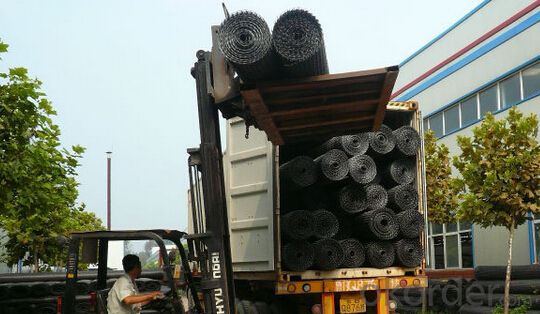
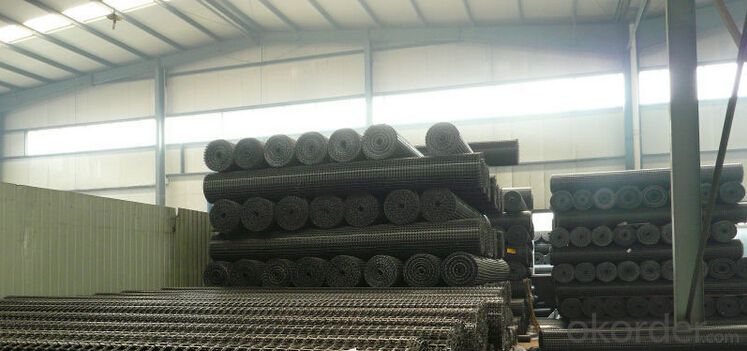
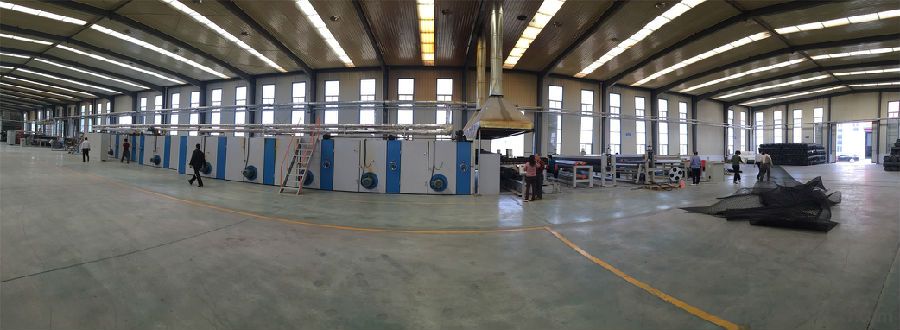
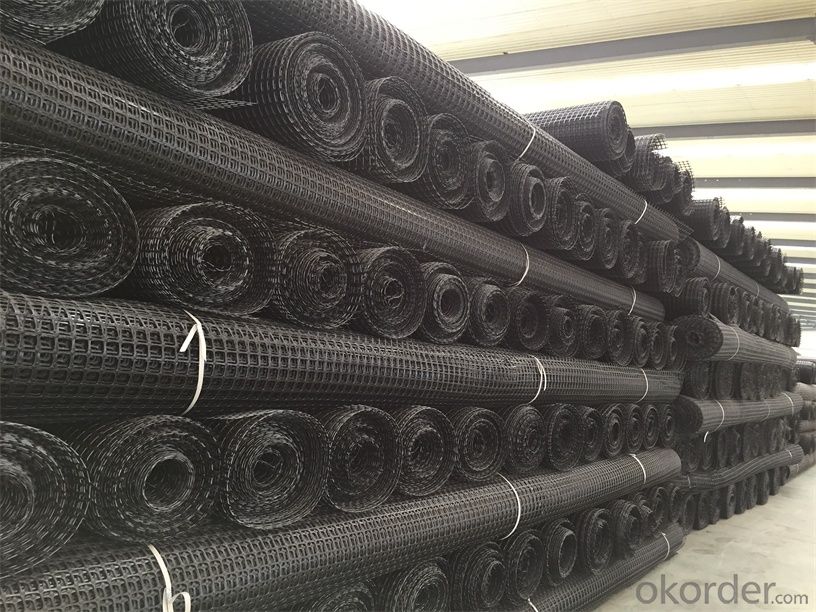
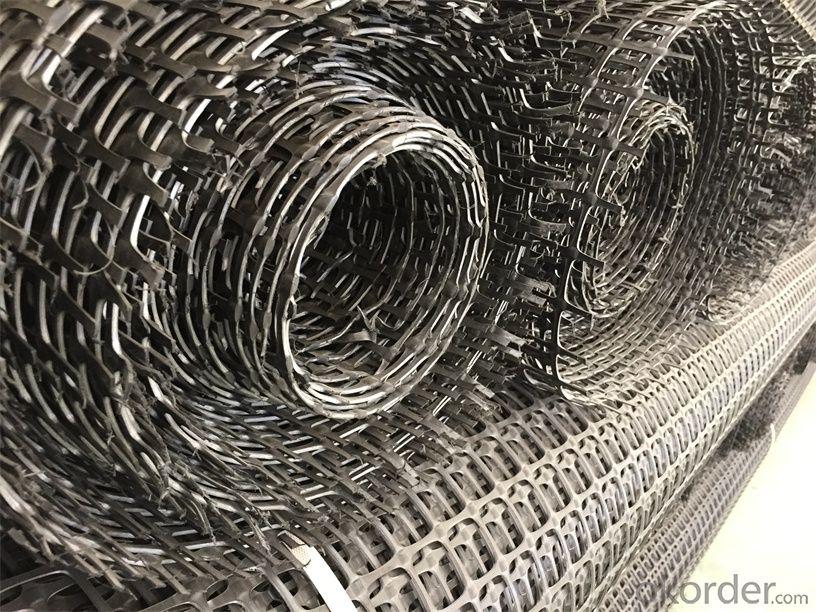
- Q: What is the effect of soil type on geogrid performance?
- The effect of soil type on geogrid performance can vary significantly. Different soil types have varying properties such as cohesion, friction angle, permeability, and compaction characteristics, which can directly influence the interaction between the geogrid and the soil. The geogrid's effectiveness in reinforcing the soil, providing stability, and distributing loads can be affected by factors like soil type, particle size distribution, moisture content, and density. Ultimately, the geogrid's performance may be enhanced or compromised depending on the specific soil type it is installed in.
- Q: meters. Material: tgsg. This section of subgrade for soft soil foundation (water) what is the purpose and principle of this treatment? Seeking answers experienced master change, or in the design the unit did. Thank you. Do a detailed description of indebted forever. My understanding is...Geogrid width of 3 meters, the berm soil subgrade body laying 1.4 meters, laying 1.6
- The use of geogrid is simply to the road with a layer of nerve, connecting roads, extend the life of the road, to enhance the anti pressure of the road, on the road slope with geogrid is to maintain water and soil, has a fixed, but the way you say is permeable to water the road, plus the geogrid is add a layer of insurance, geogrid is here, ha ha
- Q: Are geogrids resistant to chemical leaching?
- Yes, geogrids are generally resistant to chemical leaching. Geogrids are typically made from high-density polyethylene (HDPE) or other chemically inert materials, which makes them highly resistant to chemical leaching. This resistance helps maintain the structural integrity and long-term performance of geogrids in various applications, including soil stabilization, erosion control, and reinforcement projects.
- Q: Are geogrids suitable for reinforcing steep slopes?
- Yes, geogrids are suitable for reinforcing steep slopes. Geogrids are commonly used in various civil engineering applications, including slope stabilization. They provide additional stability by distributing the forces exerted by the soil and preventing soil erosion. Geogrids are lightweight, flexible, and have high tensile strength, making them an ideal choice for reinforcing steep slopes and preventing potential landslides.
- Q: How do geogrids improve soil confinement?
- Geogrids improve soil confinement by providing a strong and stable reinforcement that helps to distribute the load more evenly across the soil. This prevents soil movement and slippage, enhancing the overall stability and strength of the soil.
- Q: What is the recommended geogrid aperture size?
- The recommended geogrid aperture size depends on various factors such as the soil type, project requirements, and design specifications. It is typically determined through engineering analysis and testing to ensure optimal performance and stability.
- Q: The geogrid is not less than 3 meters on each side, what does it mean?
- If each side is folded three meters, then it is folded. Design requirements are clearly not for this purpose,
- Q: What are the differences between geogrids and geocells?
- Geogrids and geocells are both geosynthetic materials used in civil engineering applications, but they have some key differences. Geogrids are typically flat, grid-like structures made of polymer materials such as polyester, polypropylene, or fiberglass. They are used to provide tensile strength and stability to soil and aggregate materials. Geogrids are commonly used for soil reinforcement, slope stabilization, and retaining wall construction. They are installed by laying them on the surface or embedding them within the soil. On the other hand, geocells are three-dimensional honeycomb-like structures made of high-density polyethylene (HDPE) or polypropylene (PP). Geocells are used for soil confinement and erosion control. They are primarily used to create stable and load-bearing structures on weak or unstable soils. Geocells are installed by expanding and interconnecting them to form a cellular network, which is then filled with soil, aggregate, or other materials. In summary, the main difference between geogrids and geocells lies in their structure and application. Geogrids provide tensile strength and stability to soil, while geocells offer soil confinement and erosion control capabilities.
- Q: Do geogrids provide reinforcement to geosynthetic clay liners in waste containment facilities?
- Yes, geogrids can provide reinforcement to geosynthetic clay liners in waste containment facilities. Geogrids are commonly used in conjunction with geosynthetic clay liners to enhance their tensile strength and prevent their displacement. This reinforcement helps to improve the overall stability and performance of waste containment facilities.
- Q: Which kind of polypropylene geogrid belongs to the geogrid?,Geogrid is divided into four categories: plastic geogrid, steel plastic geogrid, fiberglass geogrid and fiberglass polyester geogridPlastic geogrid?
- The steel plastic geogrid is a composite of polyethylene and steel wire;Glass fiber geogrid, warp knitted polyester geogrid is woven glass fiber or polyester fiber woven geogrid, nor is it that you said the polypropylene soil
Send your message to us
Geogrids Fort McMurray Tensar Triax Geogrid for Soil Control High Strength
- Loading Port:
- Qingdao
- Payment Terms:
- TT OR LC
- Min Order Qty:
- 5000 m²
- Supply Capability:
- 2000000 m²/month
OKorder Service Pledge
OKorder Financial Service
Similar products
Hot products
Hot Searches
Related keywords
